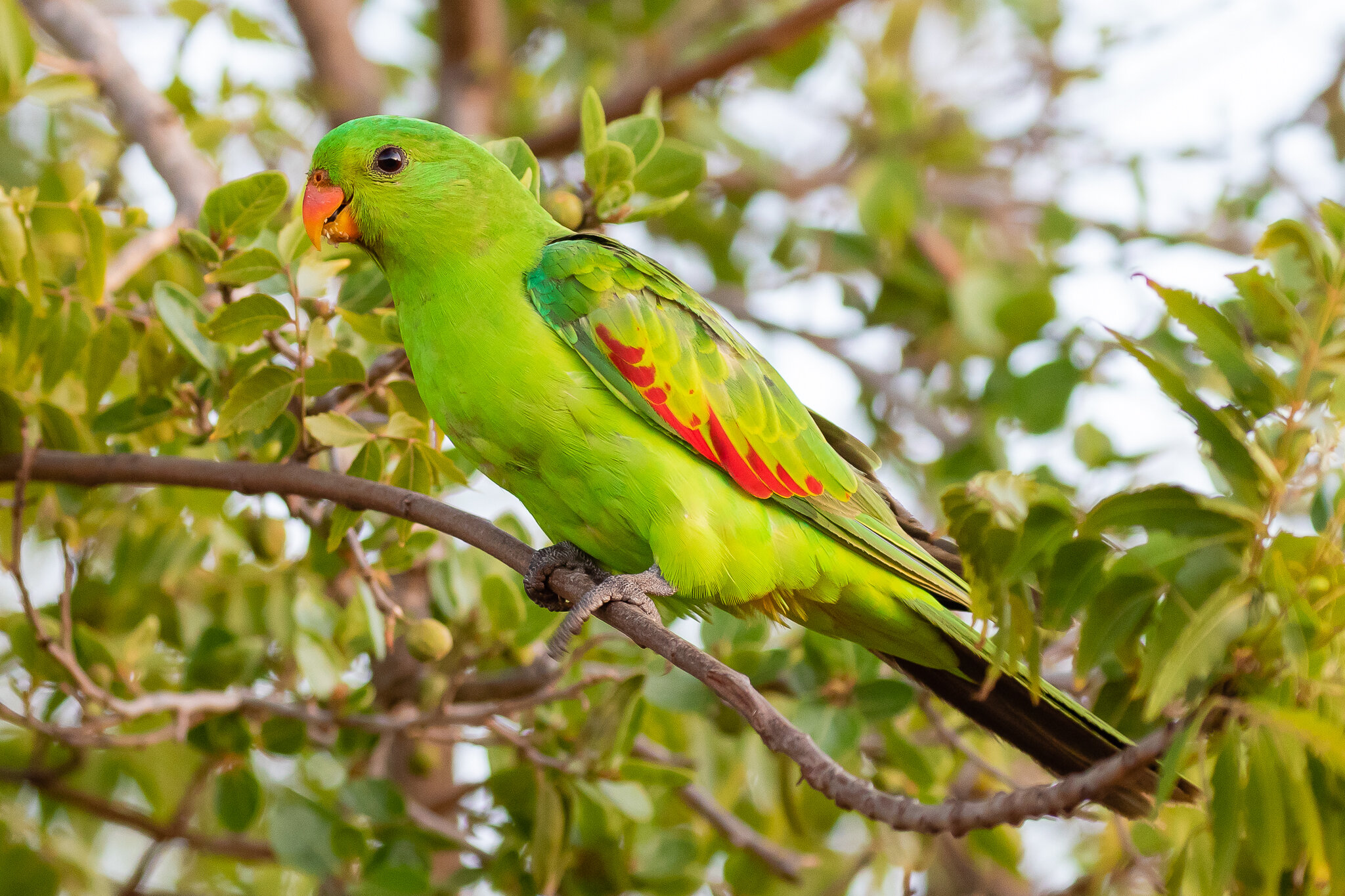Broome Western Australia
Broome is 2,200 km north of Perth by road. It faces Roebuck Bay, internationally recognised RAMSAR site which with Eighty Mile Beach to the south is Australia’s most important site for migratory shorebirds. “Birdwatching around Broome” lists birdwatching sites in the town, adjacent beaches and mangroves.
Photo: This Black-necked Stork (Jabiru) was photographed at Roebuck Bay, close to the Broome Bird Observatory, 24 km out of Broome. The background colours occur when red soil-coloured surf contrasts with the blue of the bay.
Pelicans at Roebuck Bay where the ten metre tidal range exposes up to 175 square km of mudflat, the world’s most prolific supermarket for shorebirds, with 300 species of polychaete worms, crustaceans, shellfish, and echinoderm to feast on.
Shorebirds roost at the high tide mark before being disturbed by a passing Brahminy Kite. This cloud of birds includes Godwits, Curlew Sandpipers, Greenshanks and Great Knots. Up to 800,000 birds congregate in the area including as many 600,000 shorebirds.
These Black-winged Stilts are among the permanent residents of Roebuck Bay. Farm run-off of fertiliser is increasing mangrove growth and decreasing the open mudflat used by the shorebirds.
This gathering of migratory birds includes: Bar-tailed and Black-tailed Godwits, Eastern Curlews, Curlew Sandpipers, Greater Sand Plover and Great Knots. These migrants leave in autumn for the North-Asia and Siberia summer to breed, returning in spring to make the most of the abundant food of Roebuck Bay and Eighty Mile Beach.
A Brown Goshawk drinks at a Broome Bird Observatory birdbath, while Brown, Rufous-throated, Singing and Yellow-tinted Honeyeaters and Zebra finches look on warily, awaiting their turn.
Zebra Finch at the Broome Bird Observatory birdbath. The Observatory provides an educational and scientific facility, with accommodation for visitors and resident guides who facilitate regular tours, courses and manage the research facilities.
At a Broome shopping centre this overflow pipe provides fresh water to thirsty Red-Headed Honeyeaters. Mangrove loving species gather at this pipe and in the adjacent mangroves at Streeter’s Jetty.
Red-breasted Babblers seen at the Broome golf course. The Red-breasted race is the chestnut coloured counterpart of the southern Grey-Crowned Babbler.
The Bar-shouldered Dove, often seen and more often heard in the streets and suburbs of Broome.
This north-Australian honeyeater, the Rufous-throated Honeyeater adorns one of Broome’s colourful Poinciana trees.
The Singing Honeyeater (race forresti) is a very common visitor to Broome gardens.
The Yellow-tinted Honeyeater is a bird of the northern open forests and woodlands.It is moderately common in Broome.
The Brown Honeyeater, another very common bird in Broome gardens.
Red-winged Parrots are often seen enjoying ripe Mangoes, then diverting to the surrounding bush for more traditional fare, as seen in this photo.
Darwin’s Port is a good site to view shorebirds and seabirds. It is a gathering place for raptors like this Brahminy Kite perching on a light on the Broome Port Jetty.
Shorebirds gather on the mudflats under the Broome Port Jetty. This Common Sandpiper feeds on rocks exposed at low tide.
This Eastern Reef Egret’s sour look is due to an uncooperative octopus - that did not want to become the Egret’s dinner. After fifteen minutes the Egret gave up.
A lack of tail feathers was not hindering this Little Friarbird’s activities outside the restaurant at Broome Port Jetty.
An unexpected flyover by two Brolgas.



















